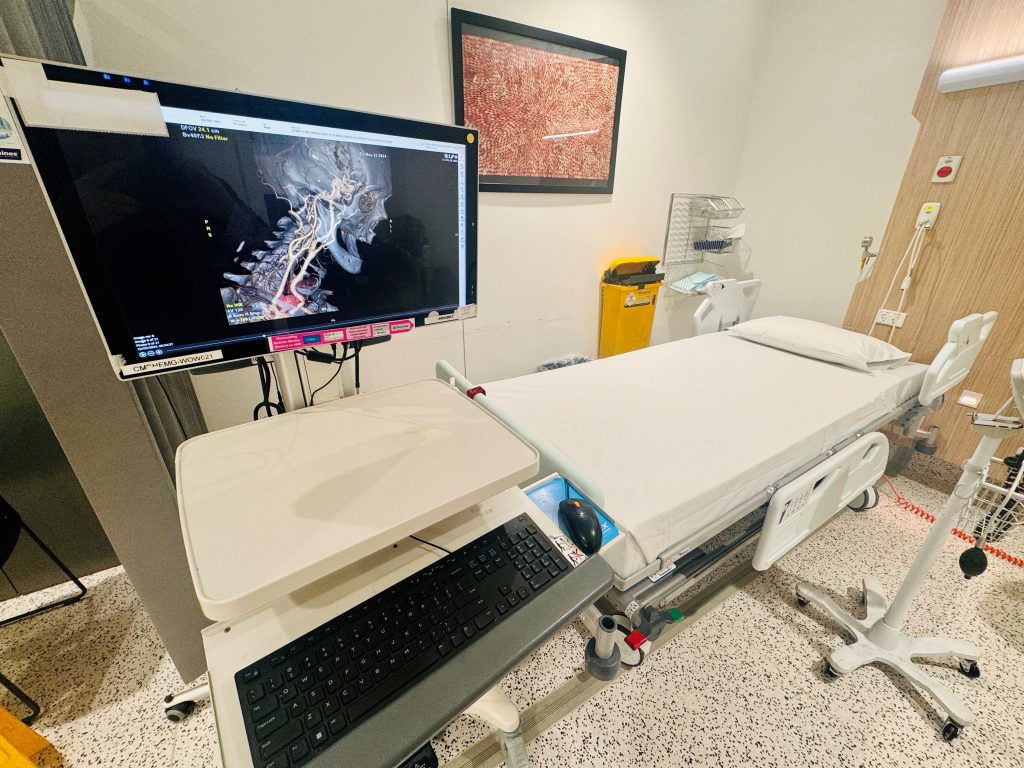Articles / 1 in 4 coercive control survivors have been strangled

0 hours
These are activities that expand general practice knowledge, skills and attitudes, related to your scope of practice.
0.5 hours
These are activities that require reflection on feedback about your work.
0 hours
These are activities that use your work data to ensure quality results.
These are activities that expand general practice knowledge, skills and attitudes, related to your scope of practice.
These are activities that require reflection on feedback about your work.
These are activities that use your work data to ensure quality results.
Over a quarter of Australian women who have experienced coercive control have been subjected to non-fatal strangulation. With its effects ranging from carotid artery dissection to a more than seven-fold increased risk of being murdered, the ability to recognise and manage non-fatal strangulation can literally save lives.
Non-fatal strangulation means a person has survived having pressure placed on their neck that partially or completely blocks airflow and/or blood flow to the head.
This may involve pressure applied by the hands or other body parts (such as a forearm, knee or foot), or by wrapping or pressing an object (such as a belt, scarf, or broom handle) around or against the neck.
The degree of external injury does not reflect the severity of the incident.
“Often when we do an examination, we’re looking for signs that might be there, but actually really significant internal injury can take place without any bruising, marks or swelling on the outside,” explains Dr Frances Chen, a GP at Leichhardt Women’s Community Health Centre.
“People can die from strangulation without a mark being present on their neck.”
Evidence suggests between 3% and 9.7% of women have been strangled by an intimate partner at some point. Australian data shows that 27% of women who have experienced coercive control have also been strangled.
Non-fatal strangulation is also common in sexual assault.
“Anecdotally from my experience as a medical forensic examiner, probably a fifth of the women I see in a sexual assault context, if you ask them, have experienced some form of strangulation,” says Dr Ellie Freedman, manager of the medical forensic team at the NSW Health Education Centre Against Violence.
A 2021 review of sexual assault case files found that non-fatal strangulation had occurred in 18.9% of cases where the assailant was a partner or ex-partner.
Strangulation is a common tactic within controlling or violent relationships, Dr Freedman explains. One study found that in 58% of sexual assault cases that involved non-fatal strangulation, the assailant was an intimate partner.
“In an intimate partner assault, strangulation is an easy way of hurting and controlling someone. It’s a way of effectively keeping someone very physically powerless. It keeps them without a voice,” Dr Freedman says.
“And it often does escalate. So it is something that we see happening as the relationship becomes more dangerous.”
Non-fatal strangulation is also increasingly seen in consensual sexual relationships, she says, and can become a weapon of control when lines of consent get blurred.
“Strangulation, whether as part of consensual sex or non-consensual sex, is a very scary experience for most people,” Dr Freeman explains. “So people might feel frightened or coerced into continuing to do that as part of their sexual repertoire, even though it’s not something they really any longer consent to.”
While women are usually the victims, strangulation also occurs to heterosexual men and within same-sex relationships, Dr Freedman notes.
“It doesn’t actually take much strength or power to strangle someone. So it definitely does happen within other relationships.”
Women who have been strangled by an intimate partner are 7.48 times more likely to be killed by that partner, research has found, while recent UK data shows 19% of domestic homicide victims had a history of non-fatal strangulation.
“People who use strangulation as a means of control clearly are dangerous and people who are capable of homicide,” Dr Freedman says. “But the means of homicide is not necessarily strangulation.”
“It does indicate that increased risk of escalating violence and increased risk of homicide for a woman who is experiencing it,” agrees Dr Chen.

Occasionally, people will specifically report a non-fatal strangulation to their doctor, Dr Freedman says. Others present following domestic violence or sexual assault, in which case it’s essential to ask about non-fatal strangulation because people are unlikely disclose it.
Dr Chen says asking about how a relationship is going or screening for domestic and family violence and abuse can feel uncomfortable, “but actually asking that question about ‘Do you feel safe in your relationship?’, patients often do appreciate that.”
Importantly, women don’t always relate the word strangled/strangulation to their experiences. Some women believe ‘strangled’ means fatal, so when you ask if they were strangled they say no, when in fact strangulation has occurred.
Instead, ask if any pressure was placed on their neck.
“They might say things like ‘he had me in a chokehold’ or ‘he had me pinned down’, and the way they were pinned down was with a hand or knee on their neck,” Dr Freedman says.
Initial assessment involves looking for any red flags that suggest a patient should be managed in emergency, Dr Chen says.
Red flags include:
Dr Freedman notes carotid artery dissection is a rare but serious complication that can occur after strangulation – usually within the first week but occasionally up to three months afterwards.
She recommends having a “very low threshold” for sending patients to the emergency department, where clinical guidelines for managing non-fatal strangulation include radiological examination of the airways and great vessels of the neck in some circumstances.
Stable patients with no red flags can be managed in primary care, Dr Chen says, adding they should be reviewed in two to four weeks.
“Obviously it’s a high-risk situation; it’s someone who does need to be followed up. But also, we know that symptoms and signs can take time to develop.”
You can advise patients to attend emergency if symptoms progress or they have any concerns.
Some patients present with persistent symptoms following single or repeated episodes of non-fatal strangulation.
“We often see people who have got a history of violence who present with ongoing issues with memory loss, emotional lability, sometimes some neurological symptoms like ongoing headache, vision changes and balance issues,” Dr Freedman says.
“It’s possible that one of the causes for that can be brain injury, and brain injury can be due to repeated strangulation.”
Importantly, symptoms of brain injury overlap those of other conditions, so it sometimes goes unrecognised.
“We believe very strongly that we’ve probably got an under-diagnosed group of women who have got that kind of chronic acquired brain injury,” Dr Freedman says.
“Often women who have long term experiences of trauma do have a mental health diagnosis. Often they have had drug and alcohol issues. Often they’ve had emotional events that could give them post-traumatic stress disorder—all of which can present with some of those vague constellation of symptoms.”
While little is known about how best to treat chronic acquired brain injury, “what we do know is saying to a woman, ‘I think some of your memory loss and emotional lability and difficulty in dealing with everyday life isn’t because you’re “mad”, it’s actually because you’ve got a brain injury.’ And that has an impact on the woman’s wellbeing,” Dr Freedman says.
She suggests this condition is better viewed in terms of disability than mental health.
“It’s better for the self-perception of the woman, and it’s better for the way that the health system, as it’s set up, is likely to treat that woman.”
“Is this a woman who would benefit from allied health, from physiotherapy, from OT, from psychology? Can we get this woman on the NDIS?”
Psychoeducation and reassurance are also important, she adds.
Anyone who’s experienced interpersonal violence should know they can report it to the police and have safety assessments done, Dr Freedman says.
“If you’re seeing someone who discloses domestic violence or strangulation, we have an obligation to talk to that woman about her current safety.”
Dr Chen agrees a risk assessment is essential: “Are they safe going home? What is the risk there? Do they still live with the perpetrator? Is there escalating violence? Are children present at home? And it may mean putting together a safety plan.”
This may involve liaising with a social worker or sexual assault and domestic violence services.
Also consider whether:
During the first visit Dr Chen recommends screening for safety and anything that warrants urgent referral. “Then a lot of those other things can happen in a follow-up.”
Depending on a patient’s signs, symptoms and circumstances, they may benefit from referral to:
In New South Wales, Women’s Health Centres have various services that may be helpful, Dr Chen notes, adding that Primary Health Networks can provide information about local services and referral pathways.
Women’s Health NSW | It Left No Marks
Women’s Health NSW | Guidelines: Responding to non-fatal strangulation, sexual choking and acquired brain injury
Australian Journal of General Practice | Management of non-fatal strangulation in general practice
Emergency Medicine Australasia | Review article: Non-fatal strangulation: Hidden injuries, hidden risks
Note: This article was first published on 18 October, 2024.
Based on this educational activity, complete these learning modules to gain additional CPD.

Allergen Introduction – Practical Tips for GPs

Oral Contraception Update

What do we do With High Triglycerides?

An Update on Heart Failure in Primary Care

Very overestimated
Moderately/slightly overestimated
Quite accurate
Moderately/slightly underestimated
Very underestimated
Listen to expert interviews.
Click to open in a new tab
Browse the latest articles from Healthed.
Once you confirm you’ve read this article you can complete a Patient Case Review to earn 0.5 hours CPD in the Reviewing Performance (RP) category.
Select ‘Confirm & learn‘ when you have read this article in its entirety and you will be taken to begin your Patient Case Review.





